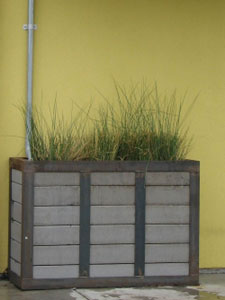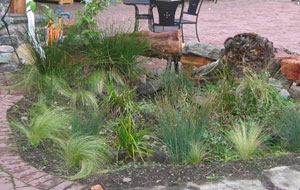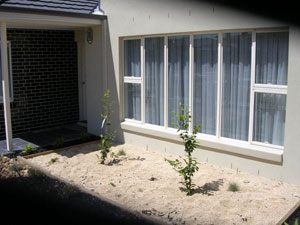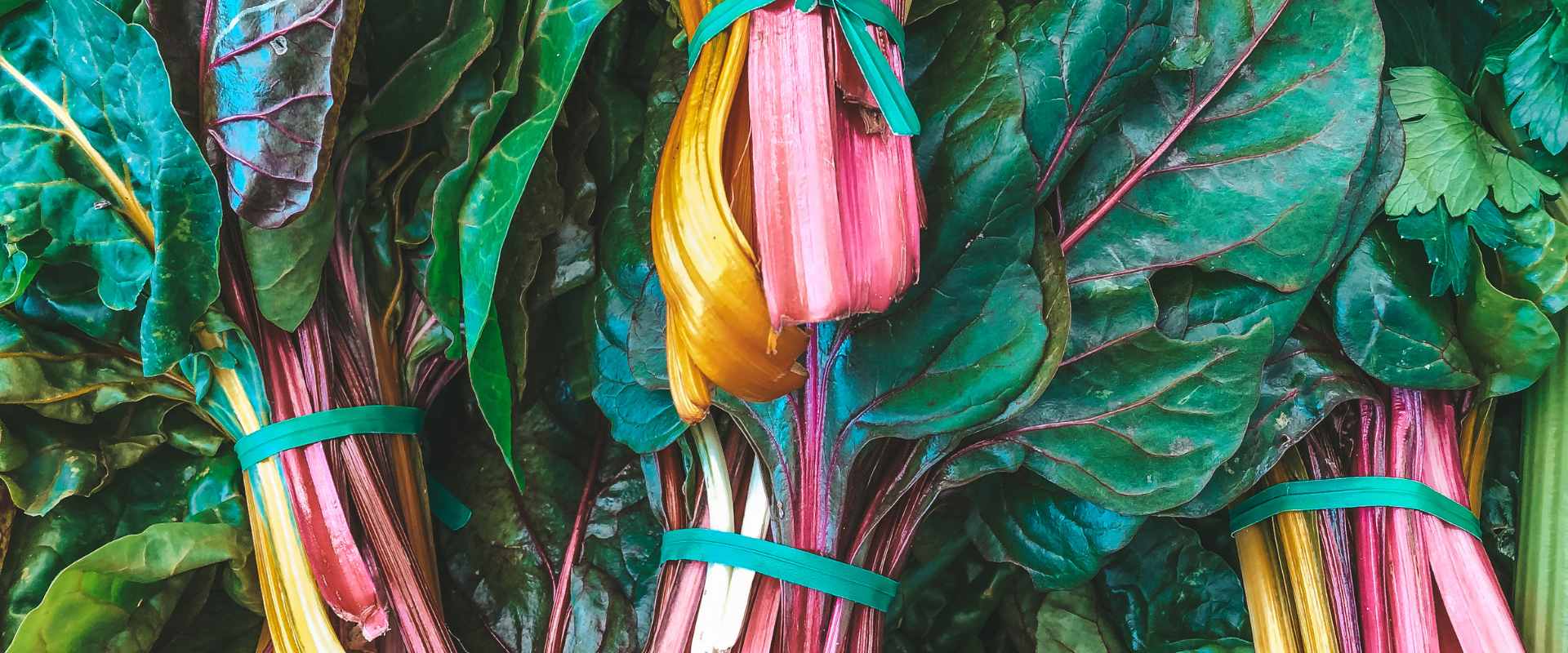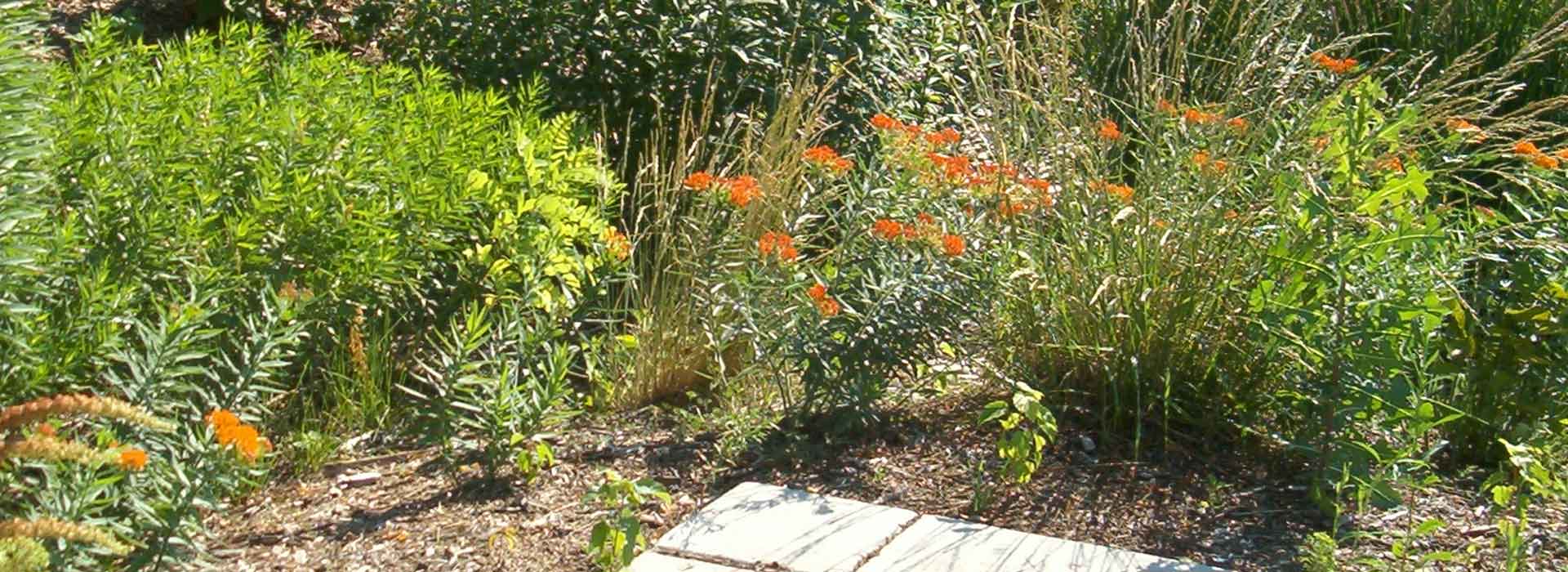July In Your Patch
When you look outside this time of year the last thing you feel like doing is standing out in the cold, wet and windy weather, especially if you live in the cooler areas. Don’t let this put you off. There is so much to do in the garden and a lot more to do in the garden shed. Get off the couch and put on the thermals, the beanie, a coat and your gumboots and warm yourself up with some winter garden love.
Of course, the following is just a rough guide, and many of you will find your situation varies from the above listing due to microclimates created in your garden, location in relation to your nearest major city, extremes of weather and garden type. But the one thing that remains the same for all zones and regions is this: improve your soil by adding organic matter, mulch and no matter the season, we can all garden more sustainably all year round.
Tool Time
Why not head out to the shed, and sharpen, clean, oil and maintain your garden tools. Sounds tedious, but it’s really rewarding, and will save you cash in the long run. Practicing tool hygiene will prevent the spread of disease.
Mulch your beds
Top up mulch on your veggie patches, herb gardens and ornamental beds. Choose sustainable, low environmental impact mulch, one that will enrich your soil as it breaks down. If in the southern states try to avoid Sugar Cane as it would have a high carbon footprint due to transport.
Green Manure
Green manure crops are good to go now... improve that dormant veggie patch. In cooler to temperate areas you can use crops like like faba beans or field peas and for warmer areas try mung beans. Remember to chop and drop them before they flower.
 Pruning & Weeding
Pruning & Weeding
Pruning and weeding is a great job to do at this time of year. Deciduous fruit trees love a big old haircut now, except your apricot!
Cool to Cold Areas
Low temperatures for extended periods of time (all of Tasmania, most of Victoria, the southern highlands of NSW, the ACT and a tiny southern bit of SA)
It’s bare root season! Get your deciduous fruit trees in now, including apples, pears, plums, peaches and nectarines. Deciduous exotic trees can also be planted now.
There’s still a bit happening in the veggie patch, especially if you love your brassicas, you could try spinach, carrots, sweet peas, broad beans, coriander and peas.
Temperate Areas
Occasional winter frosts (pretty much most of the inland, some areas of Victoria, most of SA and the southern area of WA)
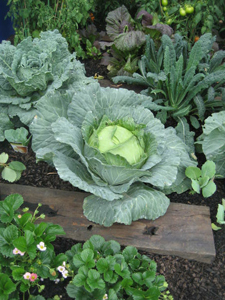 There’s not too much happening in the veggie patch, but you could try lettuce, celery, broad beans, Jerusalem artichokes (put them in a pot or they can take over), potato, garlic, radish and spinach.
There’s not too much happening in the veggie patch, but you could try lettuce, celery, broad beans, Jerusalem artichokes (put them in a pot or they can take over), potato, garlic, radish and spinach.
Many ornamental and fruit trees are ready to plant now, so try figs, pistachios, bare-rooted roses and vines (non-invasive of course)
Warm Areas
Frost free or occasional light frosts (North from about Coffs Harbour and all the way across to the west to Geraldton)
Plant out some tasty winter treats, like Chinese cabbage, rocket, silverbeet, mizuna and tatsoi.
In warmer areas pop in beans, sweet corn, leek, pumpkins, tomato and watermelon.
You can also plant some some coriander, chamomile and nasturtiums in the herb patch.
Many ornamental and fruit trees are keen to get in the ground now. Try figs, pistachios, bare-rooted roses and vines (non-invasive of course)
August In Your Patch
Days are getting longer, but not yet much warmer. Plants sense the changes in day length so, in temperate regions they are waking up, but further north the dramatic changes of the south do not occur. In southern Australia, cool, clear nights, frosty mornings and plenty of rain can only mean one thing, it is August and the beginning of bud burst. Regardless of where you live, here are some top gardening tips for your place in the month of August.
Warm Areas
Frost free or occasional light frosts (North from about Coffs Harbour and all the way across to the west to Geraldton)
Stick these into your veggie patch: rocket, silverbeet, spring onions, Chinese cabbage, mizuna, lettuce, parsley, zucchini, pumpkin, leeks and parsnip.
Why not try some lovely flowering plants in your patch as well, like: nasturtium, petunias, marigolds (French) and celosia. These are great at attracting pollinators and beneficial insects to your patch. If planning on putting in some tomatoes next month, prepare a bed now (your toms will thank you for it). Do this by popping in some organic compost, pelletised chook poo, a wee bit of water, and applying a straw mulch. This bed will be awesome come September… and you will have the greatest tomatoes in the street!
Consider a green manure crop to add some life and love to an overworked patch. At this time of year, try wheat, lablab or chickpea. Just like the tomato bed above, this will improve your soil incredibly, and, for a bit of forward planning, you’ll find it well worth the effort!
Pruning and weeding is a must job to do at this time of year.
Top up mulch on your veggie patches, herb gardens and ornamental beds. Choose sustainable, low environmental impact mulch, one that will enrich your soil as it breaks down.

Cool to Cold Areas
Low temperatures for extended periods of time (all of Tasmania, most of Victoria, the southern highlands of NSW, the ACT and a tiny southern bit of SA)
It’s your very last chance to put bare rooted trees in! Race down to the nursery now, and grab some fruit trees, including apples, pears, plums, peaches, and nectarines. Deciduous exotic trees can be planted in now also.
There’s a bit happening in the veggie patch, so you could try spinach, broad beans, Jerusalem artichokes (put them in a pot or they can take over!!), potatoes, peas, onions, parsley, cabbage, broccoli, rocket, silverbeet, cauliflower, lettuce, leek, Asian greens, radish, beetroot and parsnip.
Pruning and weeding is a top job to do at this time of year. Deciduous fruit trees love a big old haircut now, except your apricot!
Get spraying! To prevent peach leaf curl (which also effects Nectarines)
Top up mulch on your veggie patches, herb gardens and ornamental beds. Choose sustainable, low environmental impact mulch, one that will enrich your soil as it breaks down.
Green manure crops (like faba beans or field peas) are good to go now…..improve that dormant veggie patch!
On really cold days, why not head out to the shed, and sharpen, clean, oil and maintain your garden tools. Sounds tedious, but it’s really rewarding, and will save you cash and plant illness in the long run.

Temperate Zones
Occasional winter frosts (pretty much the rest of Australia, most of the inland, some areas of Victoria, most of SA and the southern area of WA)
It’s time to get planting! There is some great plants you can put in now, once the frosts have gone. Try beetroot, lettuce, parsnip, peas, radish, celery (in a milk carton), leek, lettuce, onions, mizuna, mitsuba, seed potatoes, rocket, silverbeet, and spinach.
Top up mulch on your veggie patches, herb gardens and ornamental beds. Choose sustainable, low environmental impact mulch, one that will enrich your soil as it breaks down.
If planning on putting in some tomatoes next month, prepare a bed now (your toms will thank you for it). Do this by popping in some organic compost, pelletised chook poo, a wee bit of water, and applying a straw mulch. This bed will be awesome come September… and you will have the greatest tomatoes in the street!
Pruning and weeding is a top job to do at this time of year. Deciduous fruit trees love a big old haircut now, except your apricot!
Green manure crops (like clover, barley, wheat or field peas) are good to go now… improve that dormant veggie patch!
On really cold days, why not head out to the shed, and sharpen, clean, oil and maintain your garden tools. Sounds tedious, but it’s really rewarding, and will save you cash and plant illness in the long run.
Of course, this is just a rough guide, and many of you will find your situation varies from the above listing due to microclimates created in your garden, location in relation to your nearest major city, extremes of weather (Mother Nature does like to keep us on our toes) and garden type. But the one thing that remains the same for all zones and regions is this: no matter the season, we can all garden more sustainably all year round
Happy gardening, see you next month!
October In Your Patch
With the weather warming up nicely, there’s no better place to be than the backyard. October is a huge month in the patch. With so many varieties to plant, you’ll be struggling to get it all done. So, welcome to October, a fine time to be in any sort of garden. Remember to use all your senses in the garden. Watch for pest issues, feel for soil moisture, smell your soil, and... most importantly... taste the fruits (or vegetables) of your labours. Let’s get into it...
Weeding
Weeding is a great job to do at this time of year. Cut down the competition between your tasty treats and these space invaders, and tidy up your patch. It may sound tedious, but it’s incredibly rewarding. While the kids are on school holidays, why not give them a "buck a bucket" for each bucket of weeds they remove? It gets them out in the sun, having fun and learning about nature.
Tomatoes
It’s time to plant everyone’s favourite – tomatoes. By now your soil should be good and ready, so head to the local garden centre, pick a few varieties, and get going. This is the moment we have all be waiting for. Don’t forget their mates Basil and French Marigolds. They are great companions, and no tomato patch is complete without them.
Sunflowers
Now is the time to plant some sunflower seeds. Find a sunny spot where you would like to see some happy sunflowers later in the year, and plant the seeds to double the depth of the seed. Cover lightly with dirt and wait... they’ll be popping their heads up in no time!

Top up mulch on your veggie patches, herb gardens and ornamental beds. Choose a sustainable, low environmental impact mulch that will enrich your soil as it breaks down.
Tools
On non gardening days head out to the shed, and sharpen, clean, oil and maintain your garden tools. It’s really rewarding and will save you money and plant problems in the long run.
Green Manure
Consider a green manure crop to add some life and love to an overworked garden. At this time of year, try clover, pigeon pea or soybean. This will improve your soil incredibly and you'll find it well worth the effort. Young wheat is great too, it is used to make wheat grass... an incredibly vile tasting but very beneficial health tonic. Green manure crops, including clover, barley, millet and wheat are good to go now to improve that dormant veggie patch and get ready for next season’s heavy feeding plants.
Warm Areas
Frost free or occasional light frosts (North from about Coffs Harbour and all the way across to the west to Geraldton)
Why not give these a try: capsicum, spring onions, cucumber, pumpkins, squash, zucchini, rosella, sweet corn, eggplant and watermelon.
For some super herbs try basil (both sweet and purple), parsley, sage, pyrethrum, lemongrass, oregano, rue and marjoram. Mint is ready to go, but you might want to keep it in a nice sized pot to prevent a serious mint invasion.
Feeling fruity? There is still time to plant passionfruit, paw paw, avocados, banana, citrus, and macadamias. If your tastes are a little more exotic try putting in a guava.
Why not try some flowering plants as well. Try nasturtium, dianthus, Livingstone daisies, verbena, snapdragons, petunias, chrysanthemums, Shasta daisies, marigolds (French) or celosia. These are all great at attracting pollinators and beneficial insects to your garden.

Cool to Cold Areas
Low temperatures for extended periods of time (all of Tasmania, most of Victoria, the southern highlands of NSW, the ACT and a tiny southern bit of SA)
Get planting these tasty treats: cabbage, celery, leeks, lettuce, silverbeet, spring onions, Brussels sprouts, capsicums, chillies, eggplants, and beetroot. For big patches, why not try a globe artichoke? Tough and tasty... what a combo.
Go crazy with climbing beans. Why not build a trellis or archway in your patch, and grow these green machines over the top. It looks awesome, doesn’t take up much space, and makes it easier to pick the beans.
In the herb patch, try some parsley, calendula, chamomile, marigolds, oregano, pyrethrum, rue, sage, rosemary, thyme, and Echinacea. Also try lemon balm and mint, but keep them in a pot, as they have a tendency to take over.
Why not try some aurora and Livingstone daisies, pansies, violas, snapdragons, verbena, marigolds, cornflowers, petunias and phlox. These guys are great at attracting pollinators and beneficial insects to your garden.
Temperate Zones
Occasional winter frosts (pretty much the rest of Australia, most of the inland, some areas of Victoria, most of SA and the southern area of WA)
Try artichoke, beetroots, cabbage, capsicum, carrots, chillies, eggplants, French beans, kohl rabi, leeks, lettuce, parsnip, potatoes, sweet corn and watermelon!
For some herbs try basil (both sweet and purple), parsley, sage, pyrethrum, lemongrass, oregano, rue and marjoram. Mint is ready to go, but you might want to keep it in a nice sized pot, just to prevent serious mint invasion!
Why not try some nasturtium, dianthus, Livingstone daisies, verbena, snapdragons, petunias, chrysanthemums, Shasta daisies, marigolds (French) and celosia. These guys are great at attracting pollinators and beneficial insects to your patch.
Of course, this is just a rough guide, and many of you will find your situation varies from the above listing, due to microclimates created in your garden, location in relation to your nearest major city, extremes of weather and garden type. But the one thing that remains the same for all zones and regions is this: sustainable gardening doesn’t mean no maintenance gardening… so spend some time, pull some weeds, and enjoy your patch of paradise!
Happy October gardeners, see you next month!
Information sources:
Bagnall, Lyn, Easy organic gardening and moon planting, published by Scribe Publications, VIC.
McFarlane, Annette, Organic Vegetable Gardening, published by ABC Books, Sydney, NSW.
Pictures
Tomato pic: Mary Trigger (SGA)
Sunflower pic: Elaine Shallue (SGA)
Pomegranate pic: Elaine Shallue (SGA)
Importance of Biodiversity
As sustainable gardeners, we can lead by example with plantings and design lay-outs supporting biodiversity. Some general rules of thumb are to opt for more complex planting themes (avoid mono-cultural planting), plant to encourage pollinators, seed-eaters, honey and insect eaters. Biodiversity is going for a mixture of natives, exotics, indigenous where possible.
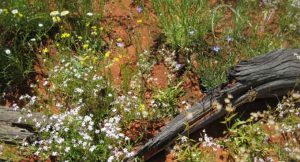 With more formal themes, native plants can be used as features - Telopea, Corymbia, Grevillea & Macrozamia, hedged and pruned plants could include Westringia, Waterhousia, Syzgium, Callistemon & Dodonaea species, and low growing indigenous plants and ground-covers can be used as fillers, borders, and can look stunning. Indeed all the design themes: Mediterranean, Bush, Potager, Asian will accommodate native and indigenous plantings, as well as the traditional exotic plants.
With more formal themes, native plants can be used as features - Telopea, Corymbia, Grevillea & Macrozamia, hedged and pruned plants could include Westringia, Waterhousia, Syzgium, Callistemon & Dodonaea species, and low growing indigenous plants and ground-covers can be used as fillers, borders, and can look stunning. Indeed all the design themes: Mediterranean, Bush, Potager, Asian will accommodate native and indigenous plantings, as well as the traditional exotic plants.
Ensure your garden does not include any invasive species, as common trees and plants are being added to the environmental weeds lists and National/State Declared Weeds registers, all the time. When in doubt, search the national or your state's government websites on weeds or Weeds Australia.
SGA welcomes Warrien Reserve, Maroondah City Council
 Warrien Reserve has become the latest public park to be given ECLIPs Accreditation. Maroondah City Council put 10 of their staff though a training program on environmental management, run onsite at the gardens by SGA. This accreditation identifies to the public that the gardens are maintained and managed with minimal use of water and minimal or no use of chemicals. On an ongoing basis and whenever they are redesigning sections of the gardens, Maroondah City Council is committed to enhancing biodiversity, avoiding invasive plants and avoiding disruption of natural systems.
Warrien Reserve has become the latest public park to be given ECLIPs Accreditation. Maroondah City Council put 10 of their staff though a training program on environmental management, run onsite at the gardens by SGA. This accreditation identifies to the public that the gardens are maintained and managed with minimal use of water and minimal or no use of chemicals. On an ongoing basis and whenever they are redesigning sections of the gardens, Maroondah City Council is committed to enhancing biodiversity, avoiding invasive plants and avoiding disruption of natural systems.
Read more
Keeping our Stormwater Clean
 With the heavy rain we have been having in most states, the importance of site planning, not just at a commercial level but also at a residential home handy person level to protect our waterways is crucial. Litter, cigarette butts, excess nutrient, chemicals and sediment wash from our roofs, roads and other non-permeable surfaces down stormwater drains and this affects the health of our rivers and creeks and ultimately polluting the bays and oceans.
With the heavy rain we have been having in most states, the importance of site planning, not just at a commercial level but also at a residential home handy person level to protect our waterways is crucial. Litter, cigarette butts, excess nutrient, chemicals and sediment wash from our roofs, roads and other non-permeable surfaces down stormwater drains and this affects the health of our rivers and creeks and ultimately polluting the bays and oceans.
Site Planning
Where is the lowest point on the site?
Water always runs to the lowest point. It will affect where you put stockpiled material. It should always be stored as far away from the lowest point as possible.
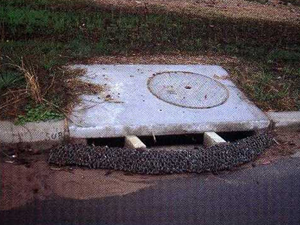
Where should you build your sediment control fences?
Sediment control fences should be built on the lowest side or sides of the site Gravel socks should also be fitted to nearby stormwater pits.
Retain as much of the existing vegetation as possible.
Rope or fence off the areas you are going to retain. Retaining the vegetation including trees and grassed areas help to prevent damage to the surface of the site later on.
Keep litter contained on site.
Many building site contain both building rubble and other forms of rubbish spread across them. Bins with lids should be kept on site and should be emptied on a regular basis. Erecting fences around the site will also keep litter from being carried off site by wind or water.
SGA welcomes Wilson Botanic Park
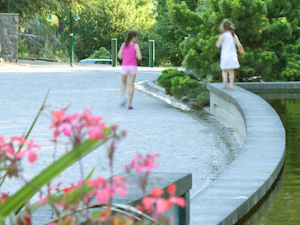 Wilson Botanic Park has become the latest public park to be given Eclips Accreditation. The City of Casey put 40 of their staff though a training program on environmental management, run onsite at the gardens by SGA. This accreditation identifies to the public that the gardens are maintained and managed with minimal use of water and minimal or no use of chemicals. On an ongoing basis and whenever they are redesigning sections of the gardens, City of Casey is committed to enhancing biodiversity, avoiding invasive plants and avoiding disruption of natural systems.
Wilson Botanic Park has become the latest public park to be given Eclips Accreditation. The City of Casey put 40 of their staff though a training program on environmental management, run onsite at the gardens by SGA. This accreditation identifies to the public that the gardens are maintained and managed with minimal use of water and minimal or no use of chemicals. On an ongoing basis and whenever they are redesigning sections of the gardens, City of Casey is committed to enhancing biodiversity, avoiding invasive plants and avoiding disruption of natural systems.
Read more
Bees & their role in your garden

EUROBEEAN and SKIPBEES... who’s who in the hive?
Without honey bees, many of our crops don’t produce, or they produce very poorly. Honey bees pollinate fruits, nuts, grains, and vegetables.
Care for your garden as if it’s a honeybee playground. Read on to find out more about both European and Native Honey Bees.
- Don’t use chemicals in the garden. Some chemicals might hurt honey bees. Go organic.
- If you must treat against insects, do so in the evening after bees have gone home.
- Bio-diversity, grow a range of plants that flower in each season so there is always bee food available.
- Let herbs (and other plants) flower as late into autumn as they want. If they’re flowering, don’t pull them until after frost has knocked them down.
- Provide sheltered spaces in your garden where bees can get out of wind and rain.
- BECOME A BEE KEEPER! It stands to reason: if more people raise bees, there are more hives, there are more bees.
European Honey Bees
Honey bees play an essential role in agriculture, not only producing honey and beeswax but also pollinating a vast number of food crops. In Australia, 35 industries are dependent on honeybee pollination for most of their production. Crops vary in how much they rely on or respond to pollination by bees. Some industries, such as almonds, apples, pears and cherries, depend almost totally on bees for fruit and nut production. The potentially devastating impact of exotic pests such as Varroa mite (Varroa jacobsoni), which has recently been detected in Queensland, pose a significant threat to honeybees and pollination services.
The highly destructive Varroa mite weakens bees and makes them susceptible to infections. It has been present in three of our nearest neighbours, Papua New Guinea, Indonesia and New Zealand for quite some time and the recent detection in Australia is very concerning. For recent info on the Varroa mite follow this link www.business.qld.gov.au/industries/farms-fishing-forestry/agriculture/land-management/health-pests-weeds-diseases/pests/invasive-animals/prohibited/varroa-mite
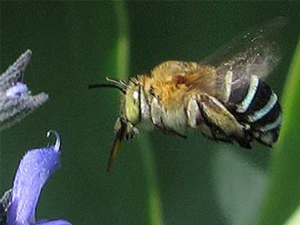
Native Bees
Australia has over 1500 species of native bees Australian native bees are important pollinators of our magnificent wildflowers. The Blue Banded bees and the stingless bees already show great potential as specialist pollinators. The Blue Banded bee (Amegilla) is capable of a special type of pollination behaviour called ‘buzz pollination’. Some key Australian crops require buzz pollination for proper development of their fruit. These include tomatoes, kiwi fruit, eggplants, blueberries, cranberries and chilli peppers. Our native Social Stingless bees (Trigona) are already being successfully used for pollination of crops such as macadamias, mangoes, watermelons and lychees in Queensland.
Want to know more?
Check out these great websites:
www.honeybee.com.au
http://www.honeybee.org.au
http://www.aussiebee.com.au
Image Acknowledgements
Pic 1 - Social Stingless Bee from http://www.aussiebee.com.au
Pic 2 - European Honey Bee pic by Elaine Shallue (SGA)
Pic 3 - Blue Banded Bee from http://www.aussiebee.com.au
Raingardens
 Biofiltration systems, such as wetlands and drainage swales, help clean stormwater before it is released into waterways or used for irrigation. Rain gardens operate the same way but they are something we can build in our suburban gardens - to help us and the health of waterways.
Biofiltration systems, such as wetlands and drainage swales, help clean stormwater before it is released into waterways or used for irrigation. Rain gardens operate the same way but they are something we can build in our suburban gardens - to help us and the health of waterways.
A rain garden is a specially designed and constructed garden bed that takes rainwater directly from the roof - the downpipe goes straight into it - or indeed any large, outdoor surface area that produces 'runoff' water. If there is an excessive amount of water running into the raingarden bed, an overflow pipe at the top directs water into the stormwater system to prevent water backing up and flooding. At the bottom, aggy pipes slowly take the percolated water away into the stormwater system.
Rain gardens serve two purposes. They help the home gardener by keeping rainwater on site longer, so it's available to plants and to revitalise the soil. The most important aspect, however, is their effect on the health of urban waterways. Rain gardens slow stormwater entering the stormwater system (which in turn empties into waterways). By the time the rainwater does enter the stormwater system, it has been slowed down dramatically (which reduces flooding events and erosion of banks etc) and the water is also cleaner, because the sand in the rain garden filters out a lot of pollutants (plants and microorganisms also take up some of these pollutants).
Even though rain gardens do help to recharge the soil locally, it's more about the health of waterways on a larger scale. If there is no rain, the rain garden won't get any water either, which is why drought tolerant plants that can tolerate temporary inundation (waterlogging) must be planted in a rain garden. If a regular supply of water for your garden is required, a rainwater tank would serve the purpose much better.
Researchers are investigating the efficiency of rain gardens in various areas. Theoretically, any area, regardless of soil type and slope, should be suitable. Appropriate construction is essential though, as rain gardens placed close to a building must not have any potential to undermine foundations etc. They can be built above ground as well as in ground, so those people with heavy clays may find above ground ones easier to install.
It's important to get good advice on construction. If the rain garden becomes a bog garden, then it's not working properly. They should be fairly free draining, so even major rain events should drain away within a day.
 The Little Stringy Bark Creek project, Mt Evelyn, Victoria
The Little Stringy Bark Creek project, Mt Evelyn, Victoria
More information and photographs can be found at: https://urbanstreams.net/lsc/
The solution to protecting creeks from the ravages of stormwater runoff is to retain as much of it as possible in the catchment to allow it to filter through the soils, to get to the creek slowly, to provide a more natural, clean base flow. Rain-gardens are the perfect tools for achieving this.
But the large excess volumes of stormwater mean that, if our rain-gardens are to treat stormwater adequately to protect the creek, we also need to harvest and use as much stormwater in the catchment as we possibly can.
In the Little Stringybark Creek catchment, it will be impossible for us to harvest enough stormwater to get the creek back to its pre-urban flows.
The front rain garden is a fully lined system, with an under-drain (top photo, which features Sharyn Ross-Rakesh from Melbourne Water assisting with planting). Approximately 1m deep, this rain garden will filter and use storm water, before directing it, or any overflow, to the rain-garden at the rear of the property.
 The rear rain garden is not lined, as there is no danger of damage to buildings.
The rear rain garden is not lined, as there is no danger of damage to buildings.
A demonstration day was held for local residents, and over 50 turned up to learn all about it. Shown here with interested residents is Associate Professor Chris Walsh (far left), principal research fellow, Department of Resource Management and Geography at the University of Melbourne.
Other rain gardens
Many variations on the theme can be constructed, but remember, they must be built correctly to work properly. These images are courtesy of https://urbanstreams.net/lsc/, where more can be viewed.
